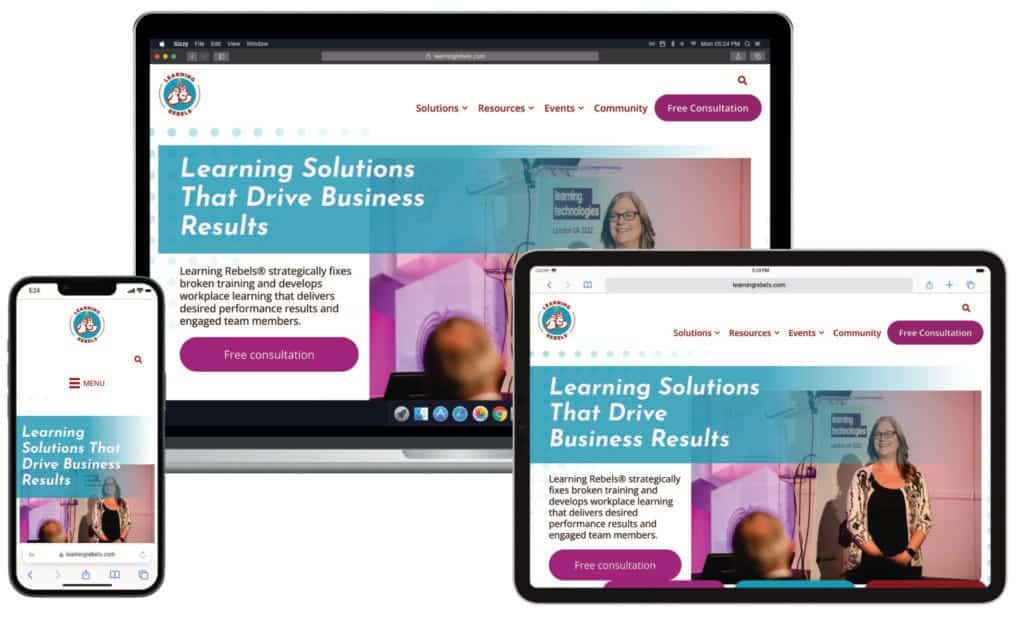We live in a digital-first world, which means your website is often the first interaction a potential customer has with your business. It’s your 24/7 salesperson, your brand ambassador, and a critical engine for growth. But what if this crucial asset is no longer pulling its weight? What if, instead of propelling your business forward, it’s holding you back?
As we navigate the future, user expectations are higher than ever. A subpar online experience can mean the difference between a new customer and a missed opportunity. If you’re wondering whether your current site is still up to snuff, here are seven clear signs that it might be time for a website redesign.
1. Your Design Looks Like a Blast from the Past
First impressions are powerful. If your website’s design screams “early 2010s” (or worse!), it’s likely harming your credibility. Think cluttered layouts, outdated fonts, low-resolution images, or a general aesthetic that feels tired.

- The Impact: An old-fashioned design can make your business appear unprofessional, out-of-touch, or even untrustworthy. Visitors may wonder if you’re still in business or if you’re meeting industry standards.
- The Fix: A modern redesign focuses on clean layouts, intuitive navigation, high-quality visuals, and a professional look that builds immediate trust.
2. It’s Not Friends with Smartphones (Poor Mobile Experience)
Take a quick look at your website on your smartphone. Are you pinching, zooming, and struggling to tap tiny buttons? If so, you have a problem. A significant majority of web traffic comes from mobile devices.

- The Impact: A clunky mobile experience frustrates users, leading them to abandon your site for a competitor’s. Plus, Google prioritizes mobile-friendly websites in its search rankings, so a poor mobile experience directly hurts your SEO.
- The Fix: A responsive or mobile-first redesign ensures your website looks and functions flawlessly on all devices – desktops, tablets, and especially smartphones.
3. It Moves at a Snail’s Pace (Slow Load Times)
Patience is a virtue, but not when it comes to website loading speed. If your pages take more than a few seconds (ideally 2-3 seconds) to load, you’re losing visitors before they even see what you offer.
- The Impact: High bounce rates are a direct consequence of slow speeds. Visitors simply won’t wait. Slow load times also negatively impact your search engine rankings.
- The Fix: A redesign can address underlying issues that cause slowness, such as unoptimized images, bloated code, or poor server configuration, resulting in a faster and more engaging user experience.
4. Your Leads & Sales Are Disappointing
Your website should be a lead-generating machine. If it’s not generating inquiries, selling your products or services, or encouraging sign-ups, it’s failing at its primary job.
- The Impact: Stagnant business growth and missed revenue opportunities. Your website isn’t effectively guiding visitors towards conversion.
- The Fix: A strategic redesign focuses on clear calls-to-action (CTAs), optimized conversion pathways, user-centric design that anticipates customer needs, and compelling content that encourages action. You can see some examples of this in our web design portfolio, which showcases the work we’ve done.
5. It No Longer Reflects Your Brand or Evolving Business
Businesses evolve. Your services may have expanded, your target audience may have shifted, or your branding may have been refreshed. If your website hasn’t kept pace, it’s presenting an inaccurate picture of your company.
- The Impact: This can confuse potential customers, misrepresent your current offerings, and dilute your brand identity. It may not resonate with the new types of clients you’re trying to attract.
- The Fix: A redesign allows you to realign your online presence with your current business goals, services, and brand identity, ensuring a consistent and accurate message.
6. Navigating It Is a Maze, Not a Map
Can users easily find what they’re looking for on your site? Or are they met with confusing menus, a muddled site structure, or, frustratingly, broken links?
- The Impact: User frustration is a guarantee. If visitors can’t navigate intuitively, they’ll quickly give up and leave, likely feeling annoyed with your brand.
- The Fix: A redesign prioritizes user experience (UX) with clear, logical navigation and a well-organized site structure, making it effortless for visitors to find the information they need and achieve their goals.
7. You (or Your Team) Dread Making Updates
Is updating content on your website a cumbersome, technical nightmare? Do you have to call a developer for every minor change? An outdated or overly complex Content Management System (CMS) can be a significant bottleneck.
- The Impact: Your content becomes stale, you miss out on timely marketing opportunities, and your website doesn’t reflect the dynamic nature of your business. This also leads to inefficiency and potentially extra costs.
- The Fix: Modern websites are built on user-friendly CMS platforms that empower you and your team to make updates, add blog posts, and manage content easily, without needing to be a tech wizard.
Is It Time to Invest in Your Future?
If several of these signs resonate with you, your website isn’t just underperforming – it’s actively hindering your business growth. In today’s competitive landscape, a professional, high-performing website is no longer a luxury; it’s a fundamental necessity.
A website redesign is more than just a facelift. It’s a strategic investment in your brand’s credibility, your ability to attract and convert customers, and your overall business success.
Ready to stop your website from holding you back? Exprance specializes in crafting modern, effective websites for businesses like yours. Schedule a complimentary consultation to explore how we can enhance your online presence.



